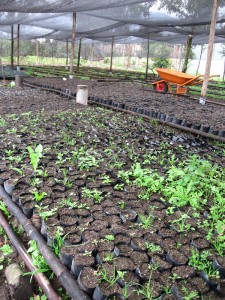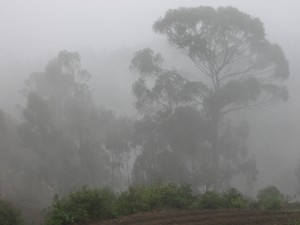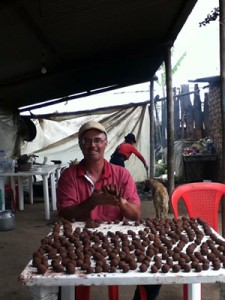
Purpose Built Nursery With 40,000 + Tree Capacity
Dressing the Mountains in Green (Vistiendo las Montanas Verde): Initiated by Patricio Pilco (Patricio) and Juan Hipo, Patricio’s uncle and community leader, the Dressing the Mountains in Green (VMV) project strives to promote the survival of the Quechua speaking indigenous peoples of the high Andes Provinces. VMV reforests their degraded ancestral lands, and provides environmental education and cultural preservation resources for the public. Through planting native nitrogen enriching plants, Agua Santa will recuperate soil fertility in their province, improve water supply, and produce food for the community and native wildlife. Since 1995 Dressing The Mountains In Green has planed over 100,000 native trees in the local region surrounding Agua Santa
VMV has been supported by the entire community which has invested numerous volunteer hours towards restoring native plants and wildlife to their ancestral lands in the High Andes. Countless “mingas,”or community work sessions, have been organized to accomplish these tasks. Patricio’s ancestral knowledge of using strategic reforestation practices using native plants is not merely tribal folklore, but its effectiveness is backed by modern scientific research. A clear link has been made between water capture of lush native vegetation in the highlands and lowland water supply.

Trees Capture Water Vapor
According to a report from the Earthwatch Institute, “Highland forests are crucial for local water supply, and studies have shown that water supply depends as much upon fog as on rainfall.” Despite the desert-like levels of precipitation of recent years in this region of the Andes, when the Ecuadorian mountains are covered with native humid forest species the growth captures the fog. The Andean highlands are the recipients of dense fog blankets that drift inland that can then be absorbed by the vegetation resulting in a humid highland forest ecosystem. The water collected by the native bushes and trees such as Polylepis, Lupin and Alder is filtered down through the plants and introduced into the soil replenishing nutrients and rehydrating the ground.

Making Seed Balls
In 2011 the community experimented with various planting methods for populating dramatic geographical landscapes with vegetation and has used “seed balls” composed of clay, various types of drought resistant native vegetation seeds, and fugi spores which they threw in to the sides of steep cliff sides and slopes at the onset of the rainy season.
As of November 2012, 2,500 trees have been successfully produced in the nursery. Due to lack of funding only this amount was produced. Non the less through diligent networking to the local municipality and local military hee was able to acquire over 7,000 native tree starts to continue the community forestation mingas.

